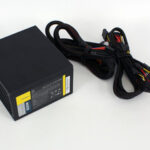You might not know anything about electrical wiring and its components but it’s actually very simple. I have went through two years of pre-engineering and we worked with the basics of electrical components and even made projects where we had to wire things up and solder them. I learned a lot about electrical wiring and its components and I would like to share with you the basics to it all.
Let’s start with the actual wire that you use. Now my class worked with little DC circuits, using a nine volt battery as are power supply. We would hook up all of our components to a breadboard which is made for making small circuits. Each wire you use will affect the result of your circuit. Each wire has a gauge reading on the tubing around the wire. The gauge of the wire is telling you how big it is and it also shows the amount of volts it works best with. The wire acts as transportation for the current of electricity coming from the battery. If you want a light to light up you have to make sure there is current getting there and by using a wire you are transferring the energy from the power supply to the light. Now in most cases you wouldn’t connect a power supply directly to a light source. It would be too much energy, depending on the size of the light. The wire also acts as a bit of a resistor. A resistor is something that resists electric flow or current.
Now let’s talk about resistors for a minute. Resistors are very small cylinder shaped and have a small piece of wire coming out each end. They are the little things that usually have about four colored bands on them. Each color on the resistor gives the amount of resistance it will apply. Start with the first band and say,” bad boys rob our young girls but violet gives willingly. The first letter of every word is related to the color on the resistor or the color of the bands on the resistor. The colors go in this order and they follow with the phrase above; Black, brown, red, orange, yellow, green, blue, violet, gray, white. So if you’re trying to figure out how much resistance a certain resistor has start with the first band on the resistor. Let’s say that the first band is blue, you would say the phrase above and count as you go. Blue ends up being the seventh color in the phrase, but it is written as six because in the phrase black, the first color is written as 0. So the phrase written as numbers goes like this; 0, 1, 2, 3, 4, 5, 6, 7, 8, 9, 10. When you’re counting, just subtract one from what you end up with at the end and you will get what number it is suppose to be. Ok now that the first band is blue you would write down six. Now if the second band is gray you would do the same process. Gray is the ninth number but because you start with 0 it becomes number eight. So you write an eight beside the first number six. You do this same process for each colored band accept the last one which should be gold, silver or none. This is a certain percentage that you add or subtract from the resistance to get a range of resistance that will also be ok to use in place of the resistor you are using.. Gold is 5%, silver is 10%, and none is 20%. Like above, there is a resistor that has blue, gray, and red bands and the last one is gold. The resistor ends up being 6.8k ohms.
Now you know all about resistors I would like to inform you on capacitors. Capacitors store energy for a circuit. Now capacitors can look a few different ways. They can look like a circle with two small wires coming out the bottom or they can look like small cylinders with two small wires coming out the bottom. The capacitor that has the capability to store more energy is usually going to be a cylinder one but I have seen some big ones that look like discs or the circle. Each capacitor is measured in farads. You will see a number like 47uf. The uf is meaning micro farad. On the disc capacitors the two wires will be the same size which is letting you know it doesn’t matter which way it goes in to the circuit. Now on the cylinder capacitors the two wires will be different sizes. One of the wires will be longer than the other and the short one is the wire that is said to be the negative side of the capacitor. There should also be a visible line on the side of the capacitor that is indicating the negative side. On the cylinder capacitors it also shows recommended amount of volts to be used with each one.
A transistor is the next thing I would like to talk about. A transistor looks like half a moon with three legs. They are usually gray or black. The three legs each represent an important role in the works of the transistor. There should be a mark on the top of the transistor, like a notch or small circle. From that notch work your way in the opposite direction with the first leg being the emitter, the second leg or middle leg is known as the base and the last leg is the collector. The transistor is known to amplify current as well as act like a switch in the circuit.
I will briefly mention the photo cell and LED’s. LED’s are light emitting diodes. They are tiny light bulbs that are many different colors and have one short leg and one long leg. The short leg is the negative and the long leg is the positive. If someone cut both legs the same then you can find the negative side by finding a straight edge on the actual light. The fact that they can be many colors says none other than that they are made from different material. So if you are building a small circuit and it tells you to use a red LED but you only have a yellow one, it is ok. Now the photo cell is used for a sensor. It detects light and if used right can light up your LED if something interferes with the light. Kind of like a night light. I have a night light that only comes on when it is dark in the room. If I plug it in and the room is full of light it won’t come on until it gets dark, same thing with a photo cell.
The last thing I would like to talk about is an IC chip. IC chips are used as the brain of a small circuit or pretty much any circuit. A chip has tons of little legs on it and each leg does a specific job. Different chips are used for different results and some chips are very easy to blow. I have dealt with IC chips that were static sensitive. We had to get rid of any static we had and also had to stand on rubber mats while we worked so we wouldn’t fry the chips. The power goes to the chips and the chip sends current to the rest of the components. Based on the type of chip a circuit could have the same components but function differently. My suggestion to you are go out and buy some small electric kits and practice putting the kits together. You will soon get the idea of small electronics and be able to repair some things by yourself.






